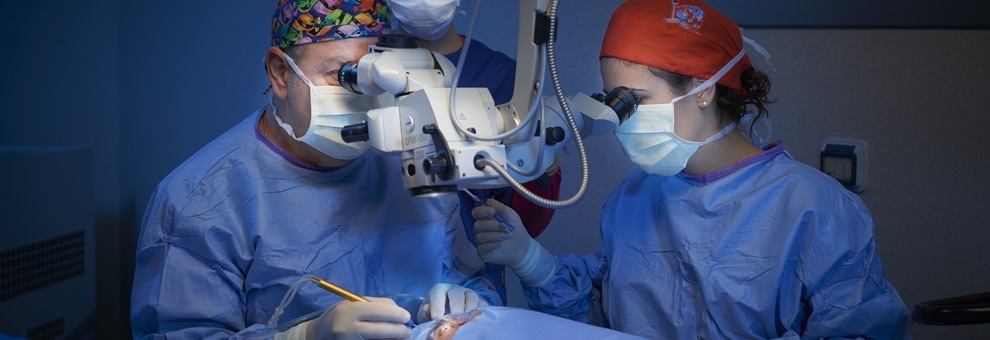Cataract phacoemulsification
Cataract surgery is an outpatient procedure and is executed under local anaesthesia (instillation of drops directly into the eye to be operated); as a rule, the duration of the operation varies between 5 and 10 minutes, and a few hours later it is already possible to appreciate observe the results achieved.
After preparing the patient (pupil dilation) and disinfecting the skin of the eyelids, y two micro incisions are made on the cornea that will make it possible to access with surgical instruments to the anterior chamber and then to the crystalline lens. The content of the crystalline lens is fragmented with an ultrasound system and aspirated, and then be replaced with an artificial lens that fits the patient’s eye. It can also be performed using a femtosecond laser, this being restricted to cases in which the pupil diameter is large and easily obtainable with the dilation by eyedrops and provided that the cataract is not too mature.
Cataract removal surgery is performed on one eye at a time, usually with a recommended interval of about 10-15 days between the two operations (unless otherwise specified by the ophthalmologist or ophthalmic surgeon). Recovery is fairly fast and with a favourable prognosis if the patient follows carefully the dressing procedures and avoids any attitudes that are consistent with the postoperative healing period (for example, assuming bad postures or failing to use adequate sun protection), but above all in direct proportion to his retinal condition.
Want to learn more?


